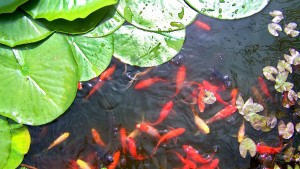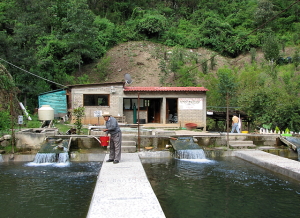Just like any other business, profit from fish farms also depends on cutting costs and increasing revenue. Improving feed to fish conversion and finding cost effective fish feeds could increase your profit.
To increase profit from your fish farm you need to know exactly how much to feed your fish, when to feed and what is the most efficient way to feed. Overfeeding could become expensive for you. It would also cause pollution and bacteria growth. If you don’t feed enough, they might not grow fast enough or you may have health problems. Efficiently feeding your fish is a delicate balancing act.
What Should You Feed Your Fish?
To increase profit, you will need to improve feed conversion, this allows you to produce more fish with less food. Before you start feeding your fish, make sure you know what type of fish you are raising. What your fish would eat depending on the species.
Different Types of Fish Feed
Fish can be vegetarian, carnivorous, or omnivorous. Some fish prefer to eat live feeds. All these types of fish feed are available in the market. You will also find manufactured pelleted food that contains a balanced nutrition for your fish. There is even dried and frozen fish feed available. Your local pet supply store or feed supply store would carry them.
An ecologically balanced pond should not require many inputs or commercial feed. If you have a variety of different species of fish, they would stay in balance by eating naturally occurring fauna and flora from different levels of the pond. They would grow fat eating naturally occurring food such as insects, algae, larvae, etc.
For increasing growth of a specific type of fish, you would add commercial feed for that type. For example if you are a shrimp, catfish or tilapia farmer, you would want to add some of the grain based food. Catfish will eat a wide variety of organisms and other fish.
Choosing Feed For Newly Hatched Juvenile Fish
New born juvenile fish need to be handled with extreme caution. They need excellent and extra security and protection against predators. It’s a good idea to keep your young fish in a separate pond or aquarium. They will eat insects, larva, fish eggs, and such. Frozen food, flaked and powdered food will also work. Try to mix feed with variety of plants, plankton, sea-weed, algae and so on.
How many times to feed your fish?
Most fish will eat once or twice a day. You could feed them twice daily in smaller amounts. If you are feeding them floating pellets or flakes, watch them eat. If they look uninterested, they may not be hungry.
Keeping your water clean from organic waste, reducing ammonia and other harmful pollutants will improve your fish health. Filter your water and keep it clean. Also make sure that your pond is ecologically balanced. Biodiversity increases availability of naturally occurring food in the pond, balance is key!
Got a question or comment? For more information on fish farming and feeding your fish in cost effective way, please give us a call at (303) 495-3705 or Click Here to book a meeting with us.
Thinking of starting your own fish farm? Get our free eBook, Unleashing the Entrepreneur in You.
We’d love to hear from you, so please leave your comment below in the comment box or visit our Facebook page.
Source: WorldWide Aquaculture
Related articles and resources:
- The Best Way to Feed Your Aquarium & Farmed Fish | WorldWide Aquaculture
- Feeds for Aquaculture :: Office of Aquaculture
- Tips On Feeding Your Fish In Fish Tank | WorldWide Aquaculture
- Types Of Fish Food
- Freshwater Shrimp Farming – How to Start Your Own Shrimp Farm
- Aquaculture – Fish Farming of Tilapia at Home
- Understanding Water Quality for Aquaculture




I am interested in starting a commercial venture in large-scale shrimp farming in the Niger Delta areas of Nigeria, West Africa and would appreciate if you could provide some cost information on a start up project.
I want to use a Five hectare space where I want to dig
a. Three 20metres long and 10 metre wide ponds for growing shrimps. The nurseries are separate.
2. The land would be tested to determine its suitability for acidity and ph+ levels
3. Aeration would be provided with solar panel power assisted facilities.
4. I also want to set up a feed mill to produce feeds for the shrimps farm.
How much would this size of venture cost me. Can you help?.